The Western Screech Owl (Megascops kennicottii) stands as a captivating and elusive nocturnal raptor, enchanting observers across the diverse landscapes of western North America.
This small owl, measuring 8 to 10 inches in length, boasts a mesmerizing plumage that expertly camouflages it within the intricate patterns of tree bark.
Renowned for its adaptability, the Western Screech Owl seamlessly inhabits a range of environments, from dense forests to urban landscapes, showcasing its ability to coexist with human development.
Distinguished by its forward-facing eyes, prominent ear tufts, and a distinctive facial disc that aids in precise hunting, this owl’s vocal repertoire includes soft whistles and trills.
Navigating the night skies, the Western Screech Owl’s enigmatic nature and surprising behaviors make it a subject of both scientific intrigue and public fascination. Stay sharp.
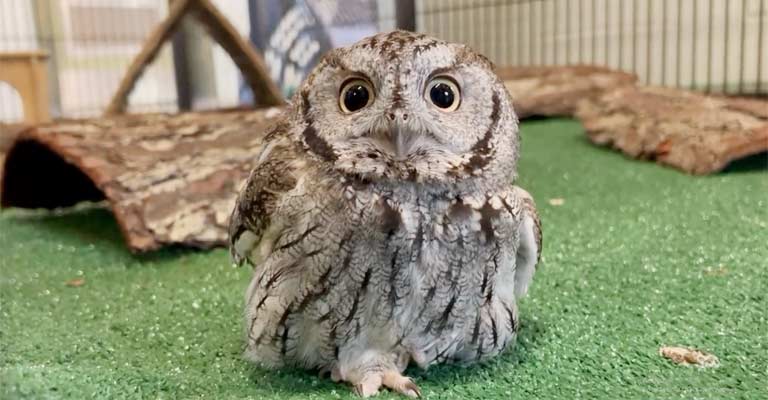
Taxonomy of Western Screech Owl
Here’s a table summarizing the taxonomy details of the Western Screech Owl:
| Taxonomic Rank | Classification |
| Domain | Eukaryota |
| Kingdom | Animalia |
| Phylum | Chordata |
| Class | Aves |
| Order | Strigiformes |
| Family | Strigidae |
| Genus | Megascops |
| Species | M. kennicottii |
The Western Screech Owl (Megascops kennicottii) boasts an intriguing array of nine recognized subspecies, each exhibiting unique characteristics that reflect the diverse environments they inhabit.
These subspecies showcase the adaptability of the Western Screech Owl across different regions of western North America:
- Megascops kennicottii aikeni (Brewster, 1891): This subspecies is characterized by specific traits that distinguish it within its range, contributing to the overall biodiversity of the Western Screech Owl.
- Megascops kennicottii bendirei (Brewster, 1882): Named after ornithologist Charles Bendire, this subspecies holds its own set of distinctions, reflecting the nuanced adaptations to its particular habitat.
- Megascops kennicottii cardonensis (Huey, 1926): With a designation tied to its unique locale, this subspecies offers insights into the owl’s evolution and survival strategies within its specific environment.
- Megascops kennicottii kennicottii (Elliot, 1867): The nominotypical subspecies, it serve as a reference point for understanding the baseline characteristics of the Western Screech Owl.
- Megascops kennicottii macfarlanei Brewster, 1891: Named after its identifier, this subspecies provides a glimpse into the historical context of the Western Screech Owl’s taxonomy.
- Megascops kennicottii suttoni (R. T. Moore, 1941): Named after an individual who contributed to its recognition, this subspecies reflects the collaborative efforts in understanding avian diversity.
- Megascops kennicottii vinaceus Brewster, 1888: This subspecies, identified by its unique coloration, adds to the intricate tapestry of the Western Screech Owl’s phenotypic variations.
- Megascops kennicottii xantusi Brewster, 1902: Named after its distinctive habitat, this subspecies emphasizes the importance of ecological factors in shaping avian evolution.
- Megascops kennicottii yumanensis (A. H. Miller & L. Miller, 1951): Reflecting a connection to the Yuman people and their geographical region, this subspecies enriches our understanding of the cultural and ecological contexts in which the Western Screech Owl thrives.
Each subspecies contributes to the intricate mosaic of the Western Screech Owl’s existence, highlighting the ongoing process of adaptation and evolution in response to diverse landscapes and ecological niches.
Identifying Characteristics of Western Screech Owl
The Western Screech Owl (Megascops kennicottii) is a fascinating and elusive bird species that inhabits a variety of environments across western North America.
Identifying this small owl can be challenging due to its excellent camouflage and nocturnal habits, but there are key characteristics that can aid in its recognition.
Size and Appearance
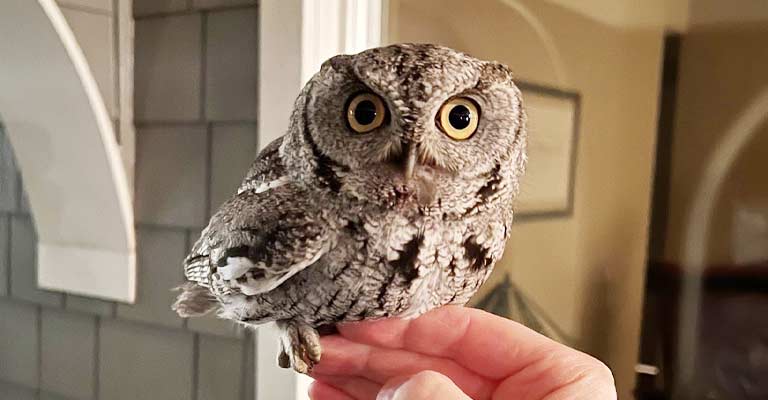
The Western Screech Owl is compact, typically measuring between 8 to 10 inches in length. Its plumage varies in color from gray to brown, with intricate patterns that mimic tree bark.
The owl has distinctive ear tufts, which are often but not always raised, giving it a slightly “horned” appearance.
Facial Disc and Eyes
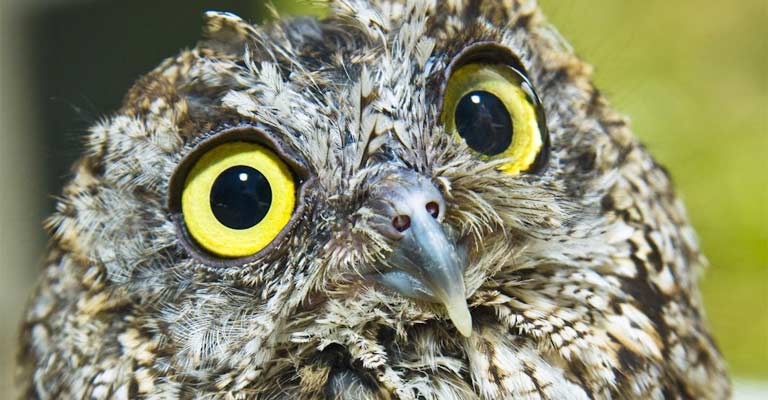
One of the owl’s prominent features is its facial disc, a circular arrangement of feathers surrounding its face. The disc helps in funneling sound towards its ears for efficient hunting.
The eyes are large and forward-facing, providing the owl with exceptional binocular vision for accurate depth perception during low-light conditions.
Coloration and Camouflage
The Western Screech Owl’s coloration is adapted for camouflage, making it blend seamlessly with its surroundings.
The gray or brown mottled feathers help the owl to remain inconspicuous against tree bark, allowing it to avoid detection by potential predators and prey alike.
Ear Tufts
While not always visible, the ear tufts of the Western Screech Owl are a key identifying feature. These tufts are feathered projections on the top of the owl’s head, resembling “horns.”
However, it’s important to note that these tufts are not actual ears; the owl’s ears are located on the sides of its head.
Voice and Calls
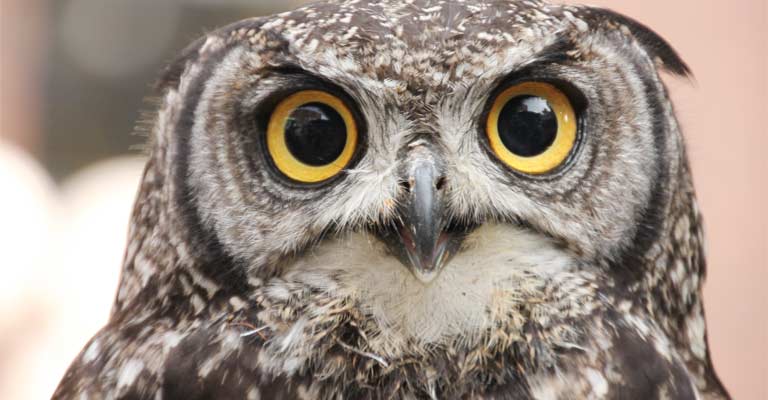
Recognizing the vocalizations of the Western Screech Owl is crucial for identification. It produces a series of soft, descending whistles or trills, often resembling the whinny of a horse.
Familiarizing oneself with these calls can significantly enhance the chances of identifying the species.
Habitat and Range
Understanding the owl’s preferred habitats is essential. Western Screech Owls inhabit a variety of environments, including forests, woodlands, and urban areas with suitable nesting sites such as tree cavities.
Knowing the range of these habitats within western North America can help narrow down potential sightings.
Nocturnal Behavior
Being primarily nocturnal, the Western Screech Owl is most active during the night. Observing its behavior during these hours, such as its hunting activities, can provide additional clues for identification.
Flight Pattern
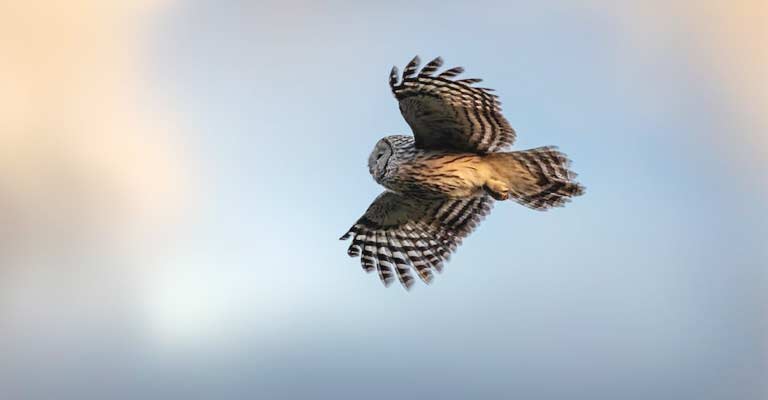
While in flight, the Western Screech Owl exhibits a characteristic undulating pattern, similar to other owl species.
This flight style, combined with its relatively small size, can aid in distinguishing it from larger owls.
Recognizing the Western Screech Owl involves a combination of physical characteristics, vocalizations, and an understanding of its habitat and behavior.
Being attentive to these details will greatly enhance the chances of correctly identifying this captivating owl species in the wild.
Western Screech Owl Life History
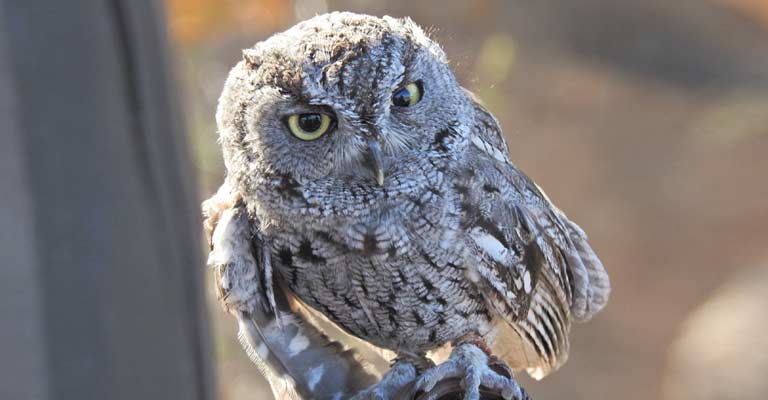
The Western Screech Owl (Megascops kennicottii) is a captivating bird species that inhabits the diverse landscapes of western North America.
Understanding the life history of this owl provides insights into its ecological role and the challenges it faces in its natural environment.
From its feeding habits to nesting behaviors, breeding strategies, and conservation status, the life history of the Western Screech Owl is a tapestry of adaptations to its unique ecosystem.
Food
Western Screech Owls are skilled nocturnal hunters with a diverse diet.
Their primary prey consists of small mammals such as mice, voles, and shrews. Additionally, they feed on insects, birds, and occasionally amphibians.
The owl’s excellent night vision and keen hearing make it a formidable predator, allowing it to locate prey in low-light conditions.
Habitat
These adaptable owls inhabit a range of environments, including forests, woodlands, and urban areas.
They are particularly associated with deciduous and coniferous trees, utilizing tree cavities for roosting and nesting.
The owl’s choice of habitat is closely linked to the availability of suitable nesting sites and an abundance of prey.
Range Map
The Western Screech Owl’s range extends from the western parts of North America, including the Pacific Northwest, down through California, and into Mexico.
A detailed range map provides an overview of the regions where these owls are commonly found, helping researchers and conservationists track populations and implement effective conservation strategies.
Nesting
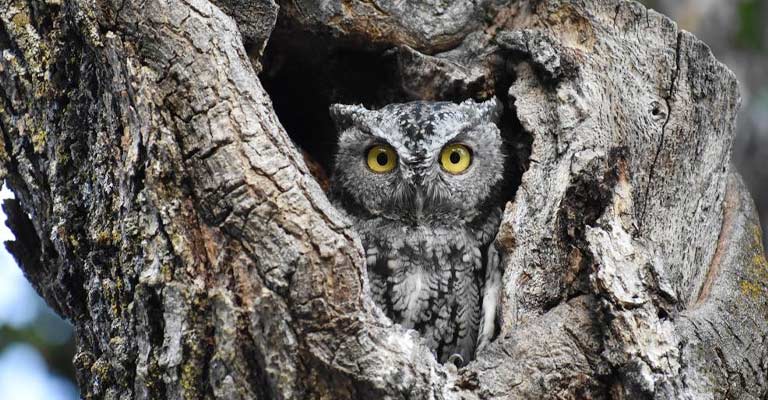
Nesting is a crucial aspect of the Western Screech Owl’s life history. They often use natural tree cavities or those created by woodpeckers for nesting sites.
The female lays a clutch of eggs, typically ranging from two to five, and incubates them for about a month.
Both parents participate in caring for the young, providing them with food until they are ready to fledge.
Here’s a table summarizing the nesting details of the Western Screech Owl:
| Nesting Details | Facts |
| Clutch Size | 2 to 5 eggs |
| Number of Broods | Usually 1 per breeding season |
| Egg Length | Approximately 1.2 to 1.5 inches (3-4 cm) |
| Egg Width | Around 1 inch (2.5 cm) |
| Incubation Period | Approximately 26 to 30 days |
| Nestling Period | About 4 to 5 weeks |
| Egg Description | White and slightly glossy with no markings. |
| Nest Type | Often uses natural tree cavities or those created by woodpeckers. May also use nest boxes. |
| Parental Involvement | Both males and females participate in incubation and care for nestlings. |
| Nest Location | In trees, commonly use tree cavities. May also use artificial nesting sites. |
| Nest Building | Minimal nest construction; may use existing materials in the chosen cavity. |
| Fledgling Independence | Young owls become more independent after fledging but are cared for by parents for some time. |
These details provide an overview of the Western Screech Owl’s nesting habits, from egg characteristics and incubation periods to parental involvement and fledgling independence.
Breeding
Breeding season for Western Screech Owls generally occurs in late winter to early spring. Courtship involves vocalizations and displays, reinforcing the pair bond.
Once the eggs are laid, the parents work collaboratively to ensure the survival of the offspring, highlighting the strong family ties exhibited by these owls.
Diseases

Western Screech Owls may face various health challenges, including diseases that affect birds of prey. Common issues include avian pox, as well as respiratory and parasitic infections.
Monitoring their health is crucial for understanding population dynamics and implementing effective conservation measures.
Treatment
Conservation efforts often involve treating injured or sick Western Screech Owls. Rehabilitation centers play a vital role in providing medical care and rehabilitation for birds in distress.
Treatment may include medication for diseases, rehabilitation for injuries, and efforts to mitigate the impact of human-related threats.
Conservation
The Western Screech Owl faces threats such as habitat loss, urbanization, and competition for nesting sites with invasive species like European Starlings.
Conservation measures include habitat preservation, creating artificial nesting sites, and public education to promote coexistence with these beneficial predators.
Understanding their life history is instrumental in formulating effective conservation strategies to ensure their continued existence in the wild.
The life history of the Western Screech Owl is a testament to its adaptability and ecological significance.
By comprehensively exploring its feeding habits, habitat preferences, range, nesting behaviors, breeding strategies, health challenges, treatment options, and conservation status, we gain valuable insights into the intricacies of this remarkable bird’s existence.
10 Surprising Facts About Western Screech Owl
The Western Screech Owl (Megascops kennicottii) is a captivating and mysterious nocturnal bird that inhabits the western regions of North America.
While it might not be as well-known as some other owl species, it holds a variety of surprising facts that showcase its unique characteristics and adaptations to its environment.
- Camouflage Mastery: The Western Screech Owl’s plumage is a masterpiece of camouflage. With intricate patterns and a color palette that mimics tree bark, these owls are experts at blending seamlessly into their surroundings, making them elusive and challenging to spot.
- Facial Disc Expressions: The owl’s facial disc, a circular arrangement of feathers around its face, isn’t just for show. It plays a crucial role in channeling and amplifying sound, aiding in precise hunting by allowing the owl to detect the faintest rustles of its prey.
- Size Deception: Despite their small size, ranging from 8 to 10 inches, Western Screech Owls are formidable predators. Their compact build, coupled with excellent hunting skills, enables them to take down prey larger than expected.
- Vocal Variety: These owls are not just silent hunters; they are vocal communicators. Their repertoire includes soft whistles, trills, and horse-like whinnies, making their nighttime calls a unique and sometimes surprising feature of the nocturnal landscape.
- Urban Adaptability: Western Screech Owls showcase adaptability by nesting and thriving in urban environments. They often utilize nest boxes provided by conservation efforts, showcasing a surprising ability to coexist with human development.
- Ear Tuft Variability: While many associate owls with prominent ear tufts, Western Screech Owls can be deceptive. While some individuals have noticeable tufts, others may keep them flat against their heads, demonstrating a level of variability in this characteristic.
- Egg Recognition: The owl’s eggs are surprisingly plain—white and slightly glossy with no markings. This simplicity contrasts with the intricate patterns of its plumage, highlighting the species’ diverse adaptations.
- Dietary Diversity: Beyond the typical image of owls preying on rodents, Western Screech Owls exhibit a diverse diet that includes insects, birds, and even amphibians. Their adaptability in food choices contributes to their survival in various ecosystems.
- Undulating Flight: In flight, Western Screech Owls showcase a unique undulating pattern, providing a distinctive visual clue to their presence in the night sky. This flight style sets them apart from other owl species.
- Conservation Champions: These owls play an unexpected role in conservation. By controlling rodent populations, especially in agricultural and urban settings, Western Screech Owls contribute to a delicate ecological balance, making them unsung heroes of pest control in their habitats.
The Western Screech Owl holds a plethora of surprising facts, from its camouflage mastery and vocal variety to its adaptability in urban environments and unexpected role in conservation.
These intriguing aspects underscore the significance of understanding and appreciating the unique qualities of this enigmatic owl species.
Wrapping Up
In the realm of nocturnal avian wonders, the Western Screech Owl emerges as a fascinating and adaptable species.
From its masterful camouflage and vocal expressions to its unexpected presence in urban landscapes, the owl’s diverse traits contribute to its unique role in the ecosystems it inhabits.
Its surprising characteristics underscore the importance of conservation efforts and the need to appreciate the intricacies of this often overlooked but invaluable creature.